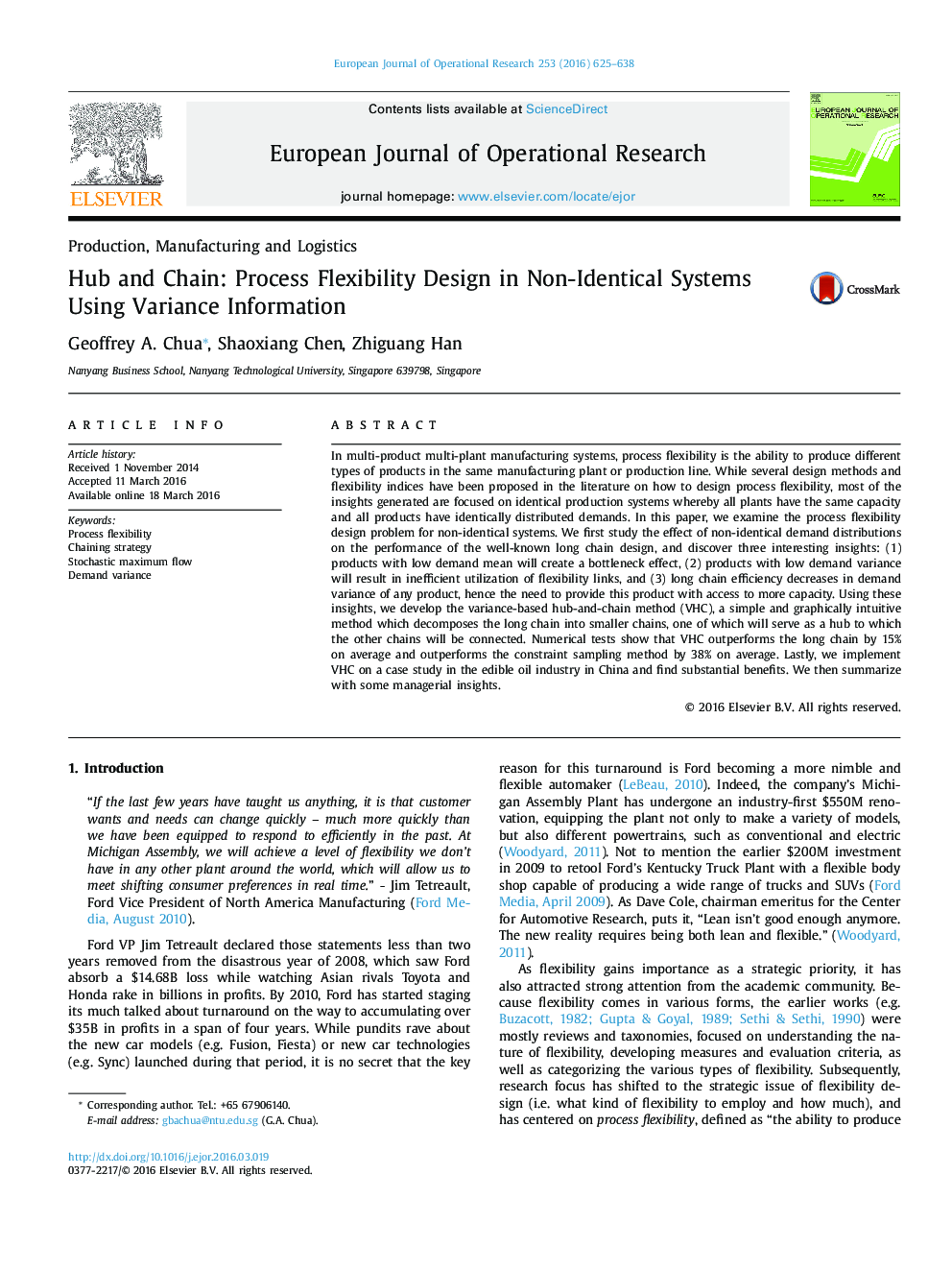| Article ID | Journal | Published Year | Pages | File Type |
|---|---|---|---|---|
| 6895537 | European Journal of Operational Research | 2016 | 14 Pages |
Abstract
In multi-product multi-plant manufacturing systems, process flexibility is the ability to produce different types of products in the same manufacturing plant or production line. While several design methods and flexibility indices have been proposed in the literature on how to design process flexibility, most of the insights generated are focused on identical production systems whereby all plants have the same capacity and all products have identically distributed demands. In this paper, we examine the process flexibility design problem for non-identical systems. We first study the effect of non-identical demand distributions on the performance of the well-known long chain design, and discover three interesting insights: (1) products with low demand mean will create a bottleneck effect, (2) products with low demand variance will result in inefficient utilization of flexibility links, and (3) long chain efficiency decreases in demand variance of any product, hence the need to provide this product with access to more capacity. Using these insights, we develop the variance-based hub-and-chain method (VHC), a simple and graphically intuitive method which decomposes the long chain into smaller chains, one of which will serve as a hub to which the other chains will be connected. Numerical tests show that VHC outperforms the long chain by 15% on average and outperforms the constraint sampling method by 38% on average. Lastly, we implement VHC on a case study in the edible oil industry in China and find substantial benefits. We then summarize with some managerial insights.
Keywords
Related Topics
Physical Sciences and Engineering
Computer Science
Computer Science (General)
Authors
Geoffrey A. Chua, Shaoxiang Chen, Zhiguang Han,
